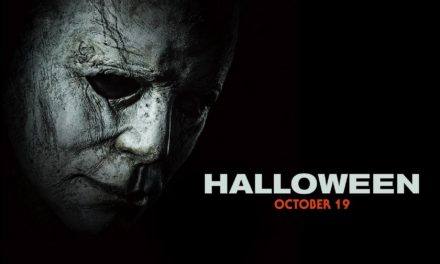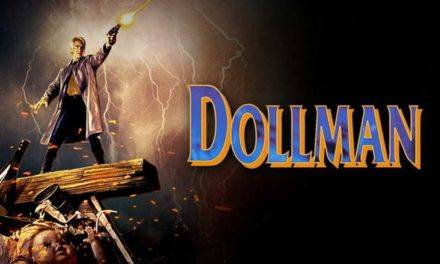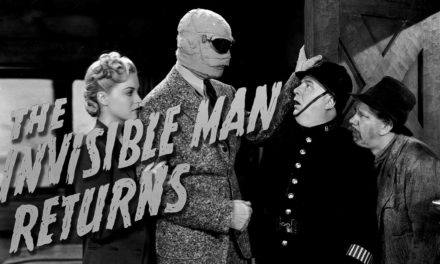I talked about Italian exploitation filmmaker Aristide Massaccesi, aka Joe D’Amato, in my review of his 1980 cannibal film, Antropophagus. Before he was a director, D’Amato worked as a cinematographer for directors like Umberto Lenzi, Massimo Dallamano, and Demofilo Fidani. He got his first chance at directing in 1972, co-directing various spaghetti westerns before directing his own films in 1973. His first solo films were 1973’s Death Smiles on a Murderer and 1974’s Heroes in Hell, both featuring Klaus Kinski. The first film he directed using the Joe D’Amato pseudonym was 1975’s Red Coats, which was a hit upon release. Between 1975 and 1977, D’Amato entered the adult film world with his Black Emanuelle series starring Laura Gemser. Returning to Italy in 1978, he directed the nunsploitation film, Images in a Convent, eventually directing a new horror film. That film was 1979’s Buio Omega, released domestically as Beyond the Darkness.
%
Rating
Taxidermist Frank Wyler (Kieran Canter) visits his fiance Anna (Cinzia Monreale), who’s dying of some sort of unknown illness. After she dies, he returns home to confide in his housekeeper Iris (Franca Stoppi), who has her own ulterior movies. Not wanting to let her go, Frank takes Anna’s body from the funeral home to keep her preserved. Along the way, he picks up a hitchhiker (Lucia D’Elia), who catches Frank disemboweling Anna’s corpse and is promptly killed. With Iris’ help, the two chop up the hitchhiker’s body and dissolve the parts in a tub of acid. Later on, Frank runs into a jogger (Anna Cardini), who sprains her ankle and goes home with Frank for help. The two start having fun on the bed, until she freaks out seeing Anna’s body, prompting Frank to kill her. Iris helps Frank dispose of the body again, but soon her intentions become clear.
While I did overall enjoy Antropophagus, I personally found Beyond the Darkness was the much stronger film of the two. Not only does the film work as a prime Italian splatter example, but it has a psychological angle to it. As weird as it sounds, this almost has an endearing love story of a man wholly devoted to his lover. Even though what he does is deplorable, Frank clearly loves his fiance and wants to keep her around forever. In addition, you get a sense of how Iris is clearly manipulating Frank so she can get his inheritance. Not only does she help him with his murders, but she babies him, even breastfeeding him at one point. At one point, Iris tries passing off to her friends that she and Frank are lovers, but Frank rejects her. Clearly, these two have a tenuous relationship that’s on the tipping point.
From a technical standpoint, Beyond the Darkness is probably D’Amato’s most well-made film to date, even with a low budget. Much like with Antropophagus, he makes great use of shadow and darkness that add to the suspense and uneasiness throughout. Acting wise, Kieran Canter does a decent job, though he spends most of the film with one facial expression. At the same time, Franca Stoppi amps up her performance and really shows off her crazy eyes and eccentric personality. In terms of violence and gore, Beyond the Darkness is probably less graphic than Antropophagus, but it’s still pretty gruesome. The autopsy scene with Anna’s corpse alone should satisfy any gorehound, if only for how raw and real it feels. Lastly, special mention goes to the score by the Italian rock group Goblin, which is immediately catchy and memorable. Overall, Beyond the Darkness is a gory, disturbing, and effective horror film.




